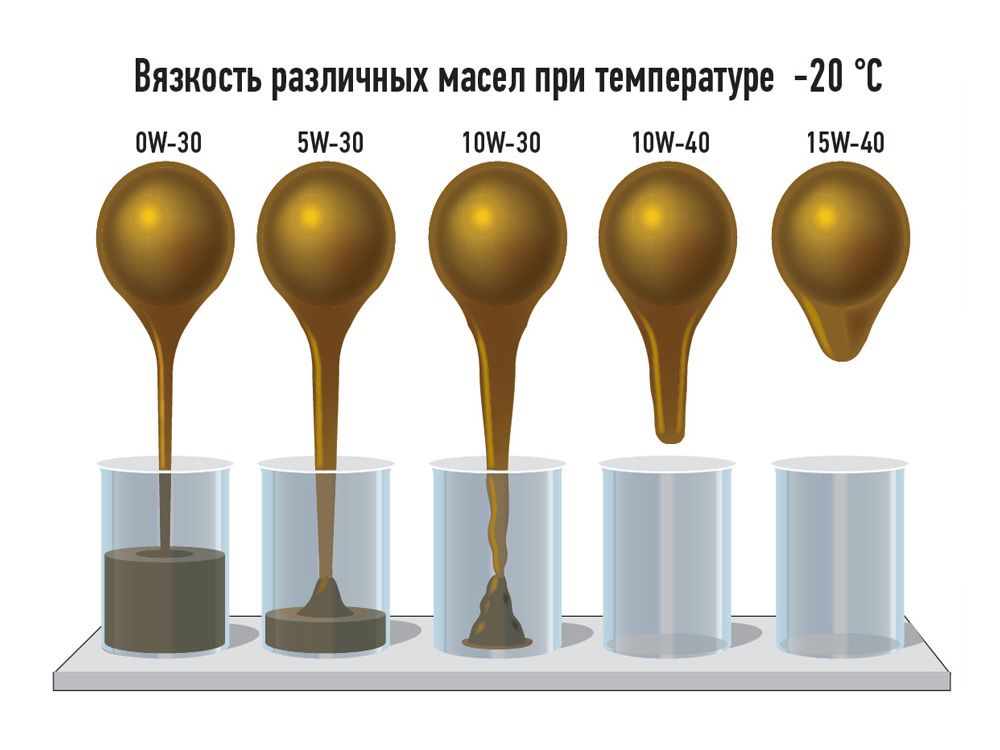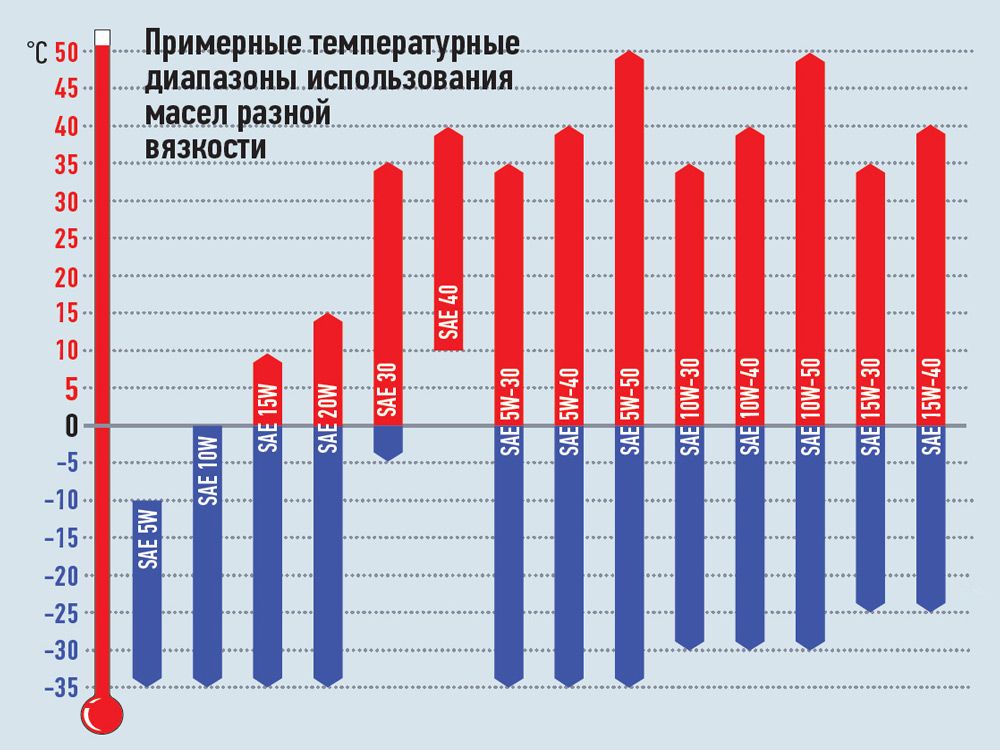Oil viscosity: what is it better to choose?
The viscosity of the engine oil is one of the main parameters on which it is determined whether a specific car is suitable under conditions of a specific temperature range. But by no means always the point of view of different people on this score are the same. So it is much easier to figure it out in everything yourself and decide what fluid to pour and why.
Engine oil lubricates all running parts of the mechanism
What is called viscosity?
The viscosity of the engine oil is its ability to maintain its turnover, being between the internal parts of the car engine. Automotive motor lubricant performs a very important function - it lubricates the internal parts of the motor, not letting them rub on each other "on dry", and also provides minimal friction force between them. It is impossible to create such a lubricant that would not have changed its characteristics when increasing or decrease in the engine temperature. Viscosity performance will vary significantly when driving, since the temperature variation between the internal parts of the engine is very high and can reach 140-150 degrees Celsius.
Automakers are selected and determined for each optimal oil fluidity, in which the efficiency will be maximized, and the engine wear, on the contrary, is minimal. That is why it is better to choose the lubricant that is recommended by the car manufacturer for a specific model, and not the one that comes friends or even specialists from the car service.
Dynamic and kinematic oil viscosity
The kinematic viscosity of the oil determines the characteristics of the engine fluid at normal and elevated temperatures. As a rule, the normal temperature is considered 40 degrees Celsius, high - 100 degrees. Cinematic viscosity is measured in centistoxes. In addition, this value can be measured in capillary-viscometers - in this case, the leakage of a certain amount of lubrication through the hole at the bottom of the tank during a certain period of time is determined.

Dynamic (absolute) viscosity does not depend on the density of the substance itself and determines the resistance arising when moving at a certain velocity of oil layers located at a short distance. A dynamic viscosity is measured using an apparatus that imitates the operation of the engine fluid in real conditions - rotary viscometers.
How to choose a viscosity?
In order to somehow classify lubricants, as well as facilitate the search for motor fluid with the desired characteristics, an international SAE standard was introduced.
SAE is an oil viscosity index, it must be indicated on the canister label. But it is important to know that the viscosity of the SAE oil in any way defines the quality of the lubricant or its compatibility with the exact engine. Other indexes are responsible for this, also specified on the canister label.
SAE may have a digital or digital-screen designation, it depends on what type of climate is suitable for lubricant. There are three kinds of seasonality:
- summer (designated as SAE 20, SAE 30);
- winter (SAE 20W, SAE 10W);
- all-season (here the marking is already "hybrid" - SAE 10W-40, SAE 20W-50).
All winter engine fluids have the letter W in the SAE index, which means Winter (winter). To find out at what minimum temperature your car will start with a defined engine fluid, you need to take 40 from the number going to the letter W. That is, if your lubricant has the Sae 10W index, then you can safely start at temperatures in minus thirty Celsius.
The numbers in the SAE index that indicate the "summer" component of the viscosity of the lubricant, that is, the numbers after W, quite difficult to translate to the tongue-minded man. You can only say that the more these numbers, the more viscous there will be fluid at high temperature values. To find out whether the summer or all-season oil is suitable for your viscosity motor, you need to use the viscosity table of engine oils. However, do not forget that the most faithful source of information about what is the viscosity of the oil is better - this is your car documentation or in extreme case consultation in the official dealer center from the manufacturer.
What is worse - understated or inflated viscosity?
What will happen if the oil viscosity on the low temperature will be higher than the norm? The friction force increases. The engine temperature as a result will increase and stop only when the viscosity falls to the required norm (and therefore the friction force will decrease). On the one hand, nothing bad will happen, but the engine will operate at a higher temperature, not calculated by manufacturers. And this can badly affect its resource - the details will become faster. That is, the likelihood of engine breakdown increases. And besides this, the engine fluid will have to change more often, since it is rapidly spent due to the high temperature.

It is much worse and more dangerous when the viscosity of the lubricant is lower than is required. As a result, lubrication consumption will significantly increase, and there is also the likelihood that the motor will simply embarrass on high revs. That is why it is strongly recommended to choose motor fluids that have an automaker tolerance.
Synthetic, semi-synthetic, mineral water - which oil is better?
Mineral oil is a motor fluid, created from petroleum products. As a result, this type of oil is divided into oil and paraffin. They have a certain fluidity, as well as strict temperature regime, so that it is possible to change these parameters using additives (because of which, by the way, the liquid is quickly coming into disrepair).
Synthetic oil is a more versatile analogue of mineral, as synthetic is a product of the synthesis of certain chemical elements, and changing its parameters, you can achieve almost any viscosity that is in demand in the car liquids market.
Semi-synthetic oil - hybrid synthetics and mineral water. It has many advantages both synthetic and mineral lubrication, but it is sometimes very difficult to choose the optimal engine for a particular engine.
A significant difference between the three types of oils occurs only in winter, when synthetics greatly wins. Due to its chemical structure, synthetic oil has good fluidity at low temperatures, and also stabilizes the operation of the engine. And besides this, it is almost not afraid of oxidation and much longer "exhaled."
Oil classification by other parameters
In addition to the SAE index, there are other indices that classify motor fluids by quality classes. For example, the API standard provides for two letters of the Latin alphabet, the first letter - either (for a gasoline engine) or with (for diesel). The second letter is directly the quality class itself. What it is further in the alphabet, the later this standard was developed, and as a result, the higher the quality of the engine fluid. For gasoline engines, the highest quality class is SM. For diesel - CL-4 Plus.
In the ACEA standard, quality classes are recorded differently: with A1 according to A5 for gasoline engines and with B1 for B5 for diesel. By the way, A5 and B5 by the ACEA classification have a very low viscosity, so they are suitable only for certain types of engines, so be careful with their operation.
Conclusion
The best engine fluid is the one that will fully comply with the instructions of the automaker and the requirements of your car. It is necessary to approach the selection of a motor fluid and correctly. Pay attention to the manufacturer, expiration date, type and classification - it will save the engine, will extend the service life. But it is best to look for those oils that are specified in the documentation for a specific car model as recommended, and no matter how old the car, how many thousands of kilometers you travel and what "authoritative" opinions advise.
The best prices and conditions for the purchase of new cars
Credit 4.5% / installments / Trade-in / 95% approval / salon giftsMas Motors














